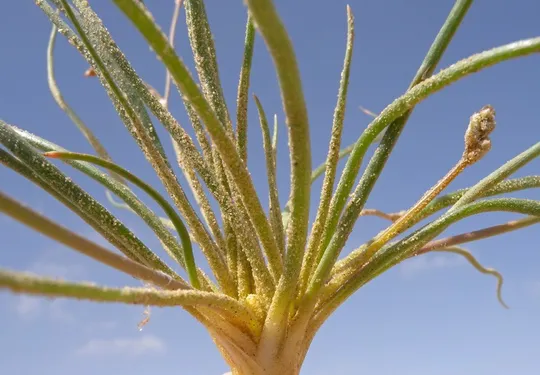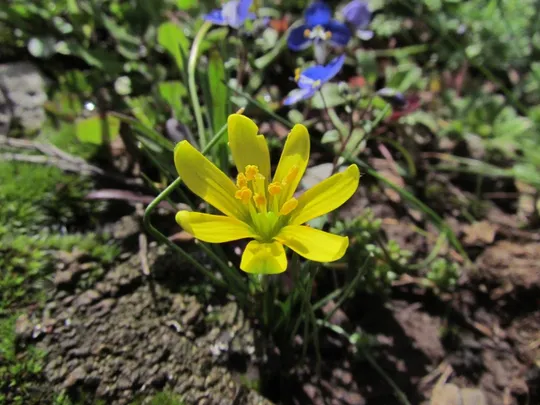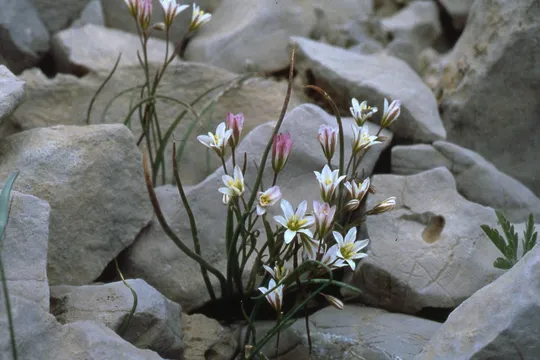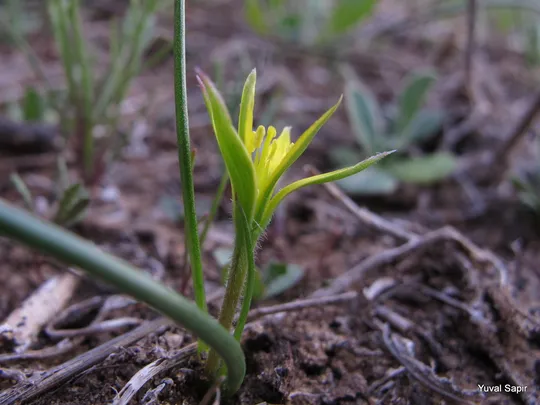Nodding Asphodel
Asphodelus refractus
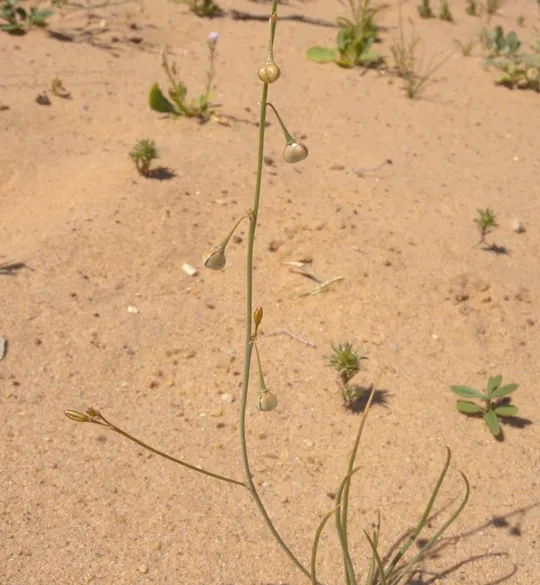
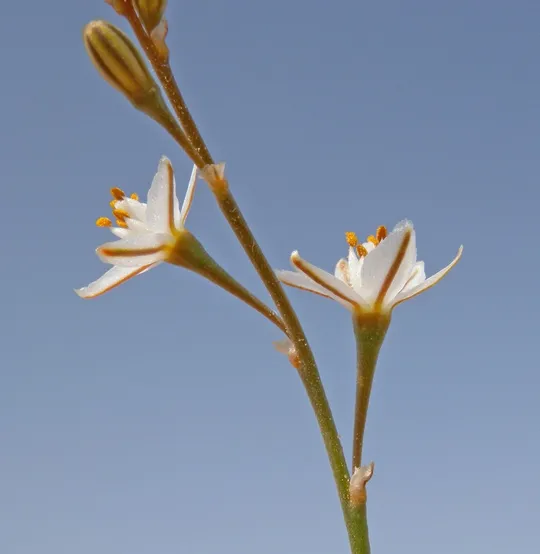
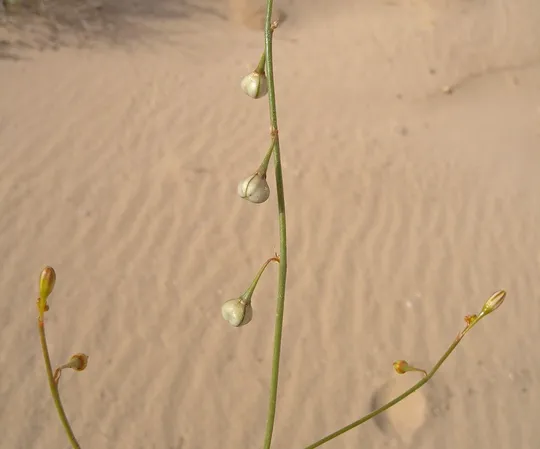
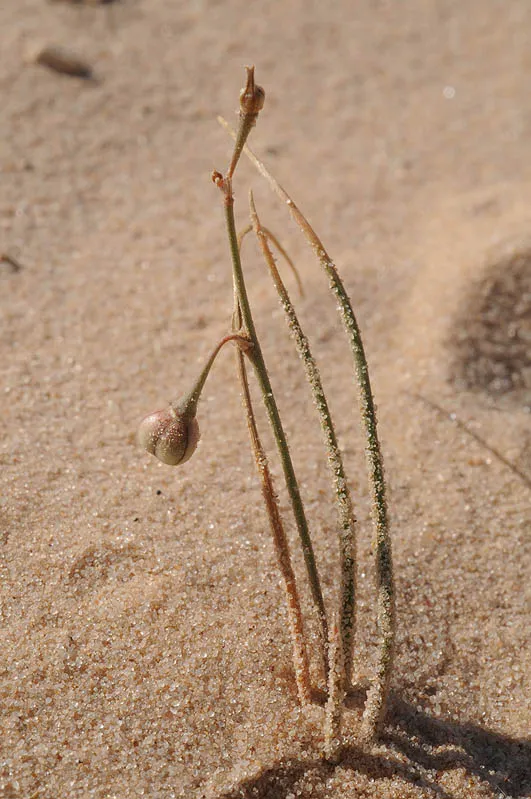
Asphodelus refractus is found in Israel in
the southern Arava, southern Negev and Elat Mountains at eight documented
sites: in the Arava at km 32 on the Arava Highway, in Wadi Shezaf (Mimi Ron,
1988-9) and in the Samar sands (Mimi Ron, 2010). It was reported for the first
time from the southern Negev in 2010 at three sites in the Ardon Valley and Wadi
Holit (Mimi Ron and Oz Golan). In the Mountains of Elat, A. refractus grows
in Wadi Nimra south of Timna (Dudi Rivner and Mori Chen). There are probably other
sites where the species grows that have not been located, due it’s lack of
prominence and its being an annual species that appears only every few years.
Sandy plains and sandy wadis in the extreme
desert, in areas with less than 50 mm average precipitation.
For the genus – see Asphodelus
viscidulus.
A. refractus differs from other Asphodelus species in the number of its chromosomes;
the basic number of its chromosomes is 13 and not 14 (Lifante, 1996). This explains
why the species does not hybridize with A. viscidulus and A. tenuifolius with which it grows. Unlike A. viscidulus, the distribution of A. refractus
in Israel is limited only to the Arava and only to the extreme desert where
average precipitation is below 50
mm.
·
Asphodelus refractus was found in the past only a few times at very few
sites in the Arava and Elat Mountains. The discovery of the species in the
Southern Arava in 2010, which was rainy year in the Negev, added a region and
sites to its range relative to what was previously known. The information regarding
changes in the number of sites over the years, if true, is seriously deficient.
·
Extreme aridity as a result of many consecutive droughts
could lead to local population extinctions, particularly if the predicted drought
trend in the southern parts of Israel due to global warming are confirmed.
·
A. refractus is protected in the Wadi Shezaf, Tsinim Cliffs and Timna Valley nature reserves.
·
There is no information regarding its threat status in
the deserts south of Israel. It does not appear in any red books.
Comprehensive surveys should be conducted, particularly
in rainy years, to identify Asphodelus refractus populations in the Arava
and in the Elat Mountains to obtain a clearer picture of the number of populations,
their locations and sizes and to initiate suitable monitoring.
Asphodelus refractus
grows in North Africa: Algeria, Tunisia, Libya and Egypt; it
appears in the Arabian deserts and spreads northwards to southern Israel and
southern Jordan. In our region, it reaches the northern limit of its
distribution.
Asphodelus refractus is a small plant characteristic of
sandy habitats in the extreme desert that grows at a small number of sites in
the northern Arava and the Elat Mountains, which is also the northern
distribution limit of the species. Its appearance is sporadic and contingent on
rainy years. Additional information is required to provide an assessment of its
threat status and to suggest means of conservation.
Lifante, Z.D., 1996. A karyological study of Asphodelus L. (Asphodelaceae) from the Western Mediterranean. Botanical Journal of the Linnean Society, Volume 1, Number 4, pp 285-344
Current Occupancy Map
| 1000 squre meter pixel | 5000 squre meter pixel | 10000 squre meter pixel | |
|---|---|---|---|
| number of observations | 0 | 0 | 0 |
| in total pixels | 0 | 0 | 0 |
| Family | Liliaceae |
| Classification | On the near threatened species list |
| Ecosystem | Extreme Desert |
| Chorotype | Saharo - Arabi |
| Conservation Site | Wadi Shezaf Nature Reserve, Ardon Valley, Wadi Sha'allab |
| Rarity |
1
3
6
|
|---|---|
| Vulnerability |
0
1
4
|
| Attractiveness |
0
0
4
|
| Endemism |
0
0
4
|
| Red number |
1
2.6
10
|
| Peripherality | S |
| IUCN category | DD EW EX LC CR EN VU NT |
| Threat Definition according to the red book | Near threatened |
 Based on:
Based on:
